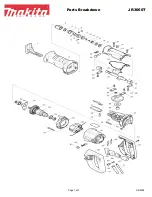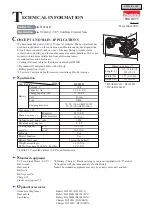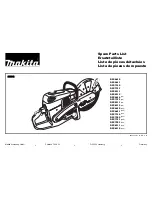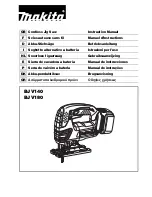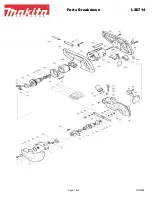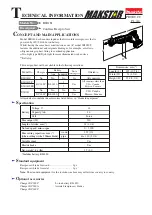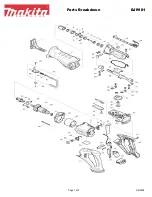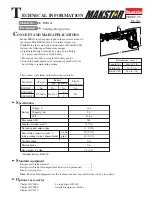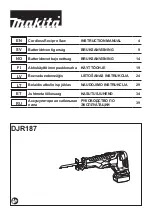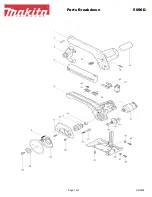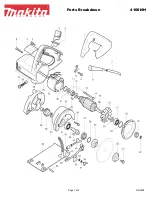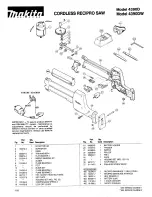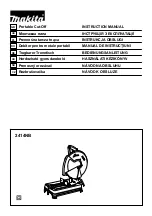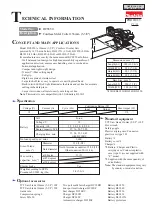
61
Using Featherboards for Thru-
Sawing
Featherboards are not employed for thru-
sawing operations when using the miter
gauge.
Featherboards are used to keep the work
in contact with the fence and table as
shown, and to help stop kickbacks.
Use the T-slots in the rip fence to attach a
7-1/2" high flat facing board, the full length
of the fence, as shown.
Mount featherboards to facing board and
table as shown, so that leading edges of
featherboards will support workpiece.
WARNING: Make sure the feath-
erboard against the edge
presses only on the uncut por-
tion (in front of the blade). It
might otherwise pinch the blade
in the kerf and cause a kickback.
Before starting the operation (switch
“OFF” and blade below table surface):
1. Install featherboards so they exert
pressure on the workpiece; be positive
they are securely attached.
2. Make sure by trial that the feather-
boards will stop a kickback if one
should occur.
Using Featherboards for Non Thru-
Sawing
Featherboards are not employed during
non thru-sawing operations when using
the miter gauge.
Use featherboards for all other non thru-
sawing operations (when sawblade guard
must be removed). Featherboards are
used to keep the work in contact with the
fence and table as shown and to stop
kickbacks.
Use the T-slots in the rip fence to attach a
7-1/2" high flat facing board, the full length
of the fence, as shown.
Work
Support
Featherboard
Facing
Board
Workpiece
Featherboard
Push Stick
Featherboard
Work Support
Facing
Board































